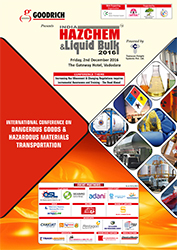Highlights
Hazmat, or hazardous materials/goods, has been defined and classified by the International Maritime Organization (IMO) under the International Maritime Dangerous Goods (IMDG) Code. This categorises them into a number of classes, which assist in regulating their stowage on ships and transportation.
Transportation, storage and handling of hazardous cargo/dangerous goods calls for extreme caution and meticulous planning, especially with regard to safety and environment protection, as one is dealing with consignments such as a variety of chemicals, explosives, toxic wastes and even nuclear waste.
While Hazmat movement is increasing, it faces many constraints and restrictions. For example, most shipowners are said to be willing to allocate only limited capacity on their vessels to hazardous cargo. There are charter party clauses that reportedly restrict the loading of more than a certain quantity of IMDG cargoes. Also, under the new IMDG regulations, shore personnel booking and controlling such cargoes have to undergo an approved hazmat course.
The transportation of liquid bulk, especially in containers, of petroleum products, edible oils or even fruit concentrate is on the rise, with tank containers, Flexi Tanks, FIBC bags etc. being some of the carriage options. This again calls for stringent quality control procedures and customised solutions for safe and reliable movement.
India Hazchem & Liquid Bulk 2016, to be scheduled on 2nd December 2016 at The Gateway Hotel, Vadodara will have top sectoral players and experts expounding on the many issues impacting the movement, handling and storage of these key cargo categories, be it infrastructure impediments, policy glitches, safety factors and the need for trained personnel. The current scenario will be assessed and benchmarks suggested for the way ahead.




